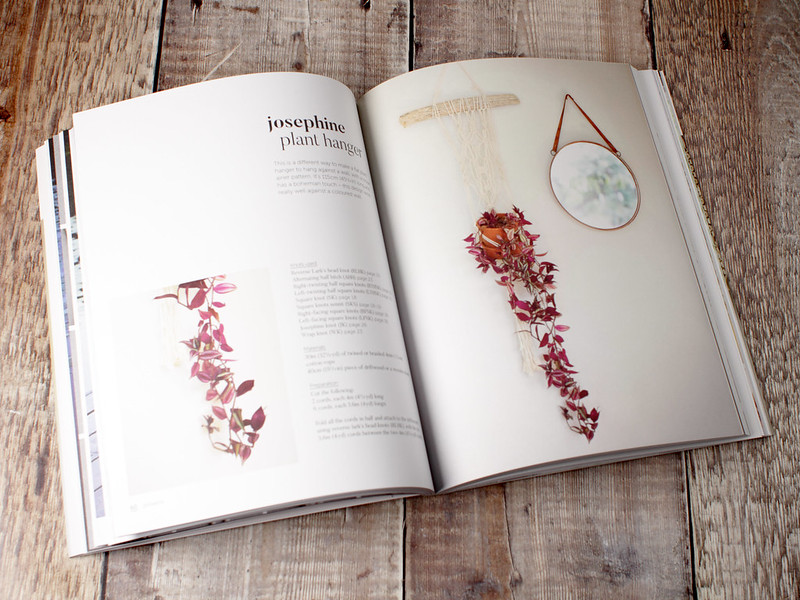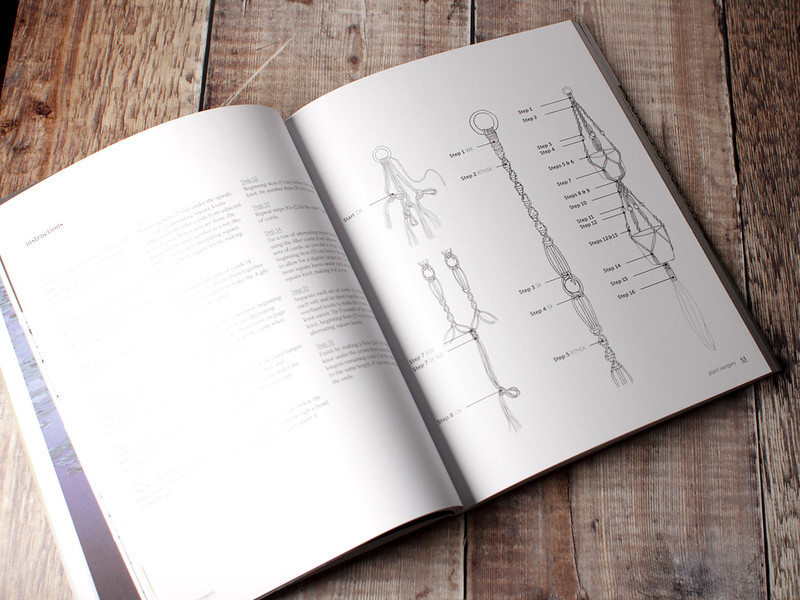A few weeks ago I decided that I needed to learn macramé, and when I get an idea into my head there is really no stopping me, so by the next day I had acquired a book.
Materials arrived a few days later, and I was off! My first project – a two-tier plant hanger – was finished in under two weeks, and I am eagerly planning the next few.
Why this sudden flurry? I’ve had a lot of time spent at home recently as I’ve not been well enough to work. In my previous home I had so many plants; orchids, cacti, ferns – there seemed to be a perfect spot where each plant would thrive. After we moved, so many plants died because this wasn’t the case in our new home. It is odd in that it has no windowsills, is incredibly dry and every available spot is either next to a radiator or dark. My daughter was born just a few months after we moved and, as you can imagine, making the place as we would like it has been low on our list of priorities.
There are so many houseplants I would like to grow, and so few places I can put them, and while I was stuck at home I realised how much this (and the general lack progress on the house) was bothering me. A lovely set of shelves solved the problem in one room, providing a happy home for my sad Fittonia and sun scorched Pilea cutting (both look much better now), and made space for a new Philodendron acquisition.
Other rooms don’t even have suitable walls for shelving. Plant hangers popped into my head as a way to get plants into difficult spaces, and macramé as the best way to make them happen on a budget.
Before we go any further, just in case anyone’s reading is itching to remark about macramé belonging in the 70s, I’d like to point out that I am from the 70s. I have zero time for clichés about crafts after devoting years to sharing my love of knitting as a contemporary creative pursuit in the face of numerous stupid stereotypes.
I am a total newcomer to macramé. There are so many options for learning new skills these days, from free tutorials and videos to online courses, and I even have a local maker space Make Town that offers macramé workshops. But for me, books suit my learning style best because I like get a broad understanding and get a sense of the full range of possibilities before embarking on a project. I find it difficult to follow instructions without context, and I like diagrams to refer back to.
The book
Macramé by Fanny Zedenius ticked all the boxes for me. It is pitched at the beginner, giving a helpful guide to materials and tools, and even tips on how to care for your hands and body while knotting. It has a clearly-presented reference of knots followed by a lovely and diverse set of patterns which cover every application for macramé I had imagined and beyond. I was very happy to find no less than four styles of plant hanger to keep my busy, but surprised at the innovative and practical uses of macramé for homeware, to provide shade and even seating.
While my interest in macramé is mainly functional, the book also features numerous decorative projects.
The patterns are specified using both written instructions and pictorially for each step.
I found this really helpful because there are definitely some steps that despite being quite easy to execute are difficult to communicate through words.
What sets this book apart from others is the stunningly beautiful photography, presenting the projects in the context of a contemporary living environment.
Zedenius hails from Sweden, and you’ll definitely recognise something of the Scandinavian aesthetic – think welcoming, warm natural materials and neutral colours, rather than cool minimalism.
In the introduction, the author talks about growing up with a love of many different crafts, but how on discovering macramé it became almost an obsession, overtaking all other. This might sounds strange to many people, but it’s something I can certainly understand and would describe how I feel about knitting! The author’s passion for macramé really comes through in this book and is both inspiring and encouraging.
The project
Just like with knitting yarn, there are standard weights of macramé cord. But, when looking for suitable cord for my project I felt a little underwhelmed by the specialist cord available. Compared with the endless yarn universe, the choice felt limited I didn’t want to invest in a kilo roll I may not use.
The designer writes about not being limited to specialist cord, and so knowing that I wanted a bright colour, so I decided to use a ball of Rico crochet cotton aran in a bold shade of mint. This cost a humble £1.89 and roughly matched the 2.5mm cord width called for by the pattern. The main difference between this and a purpose-made macrame cord is that it is softer and less tightly-spun, which gives the knots less definition, but this didn’t bother me for a first project.
I opted to make the double plant hanger from the book because I liked the design the best. When gathering up unwieldy 7m lengths of cotton there was certainly a point when I wondered if this was a good idea, but I am happy to say that this was my only moment of doubt.
I was surprised how quickly I developed a technique to work the knots efficiently. I used the warp peg from my loom to attach the hanging loop to a table, which was a good height for me. Working for just half and hour at at time as I felt like it, I quickly moved through each step of the pattern with rarely a hitch. As the project progressed, of course the lengths of working yarn grow shorter and easier to manage.
To bead or not to bead? I wasn’t sure if I beads were really my style, but I decided to include them in order to try out the techniques and I definitely think they add something.
The bulk of the plant hanger is made up of square knots (the flat bits) and half square knots (the twists), which are very straightforward. Joining the four groups of strands together under each pot is a row of crown knots.
Crown knots are a beautiful thing but also the trickiest technique of the project, requiring the four groups of strands to be manipulated under and over each other all at once. My only mistake of the project was in the first crown knot. I noticed long after the fact that two of the strands had been crossed over and as a result the knot doesn’t sit right. A word of warning would have been helpful, but luckily it’s not noticeable under the pot and I know for next time.
The completed project is an excellent addition to the house, and is already providing a home for two neglected spider plants.
Now that I’ve good a good understanding of the knots and how they work together, I am looking forward to experimenting with different designs and materials – I’m already eyeing up a large cone of t-shirt yarn. Fanny Zedenious’ book is packed with ideas and inspiration to keep me going for quite a while. The biggest challenge is choosing between all the beautiful plant possibilities!









